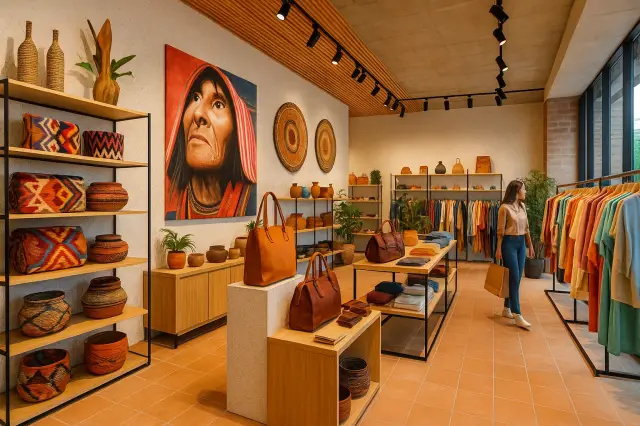The retail sector in Colombia is undergoing a profound transformation driven by culture, technology, and new consumer habits. By 2025, physical stores will no longer be just places to shop, but spaces for connection, identity, and experiences that reflect the country's diversity.
This article analyzes how Colombian retail is adapting its environments, concepts, and strategies to the local culture , and why this trend has become one of the strongest in the sector.
Culture as a driver of change in Colombian retail
For years, stores in Colombia followed global consumption models. However, the pandemic, digitalization, and a strengthening of national pride changed the landscape. Today, Colombians value local, artisanal, and authentic products more.
According to a study by AmCham Colombia , brands that understand consumer culture and reflect it in their spaces generate up to 40% more engagement. This includes aspects such as:
Interior design inspired by local art and traditions.
Collaborations with indigenous or Afro-descendant artists and communities.
Use of sustainable and domestically produced materials.
Multisensory experiences with music, gastronomy or national fashion.
New store concepts that connect with Colombian identity
Shops as cultural spaces
More and more brands are integrating culture into their business model. Stores in Medellín, Cali, and Bogotá now include galleries, workshop areas, and art exhibitions.
Notable examples include spaces that promote independent design, cultural expressions and sustainability, linking Colombian retail with the creative economy.
This trend reflects the growth of cultural tourism, analyzed in this article on cultural tourism in Colombia , where visitors seek immersive and authentic experiences.
The rise of pop-ups and ephemeral experiences
Brands are also experimenting with temporary stores or “pop-ups” inspired by Colombian festivities such as the Flower Fair or the Barranquilla Carnival.
These experiences not only boost sales, but also strengthen the emotional bond with the public by celebrating the country's cultural heritage.
Technology and sustainability: allies of cultural retail
By 2025, stores will increasingly integrate technology to enhance the experience without losing their local essence. Interactive screens will showcase product stories and their origins, while QR codes will allow customers to learn about the artisans behind the pieces.
Sustainability is also a central focus. Many stores use recycled or locally sourced materials in their furnishings, reduce their use of plastics, and promote responsible consumption, following the sustainable fashion trends in Colombia discussed in our article on responsible fashion .
Colombian brands that are setting trends
Some national brands are redefining cultural retail:
Colombian handicrafts: combine art, design and tradition at every point of sale.
Totto and Vélez: incorporate sensory experiences, workshops and products inspired by local identity.
Offcorss and Studio F: mix modernity with cultural elements in decoration and campaigns.
Small concept stores in Bogotá and Medellín that promote handmade products, urban art, and local gastronomy.
These initiatives show that Colombian retail not only sells products, but also stories that connect with cultural roots.
Experience, community and culture: the new DNA of Colombian retail
The future of retail in Colombia is based on building community , not just selling. Stores are becoming spaces for meeting, learning, and national pride.
Cultural events, entrepreneurship workshops, and collaborations with artists are now an essential part of the consumer experience.
Furthermore, local culture influences campaign design, the music selection of venues, and even the olfactory atmosphere, making each visit an immersive and memorable experience.
The economic impact of the merger between retail and culture
According to data from the Ministry of Culture, the creative and cultural sector contributes approximately 3.3% to Colombia's GDP . Retail businesses that incorporate cultural elements benefit from this boost, as they generate added value, attract tourism, and promote the local economy.
This phenomenon is directly connected to the orange economy , a topic also addressed on the CalendarioDeColombia.com blog, which highlights how art and creativity have become drivers of sustainable development.
